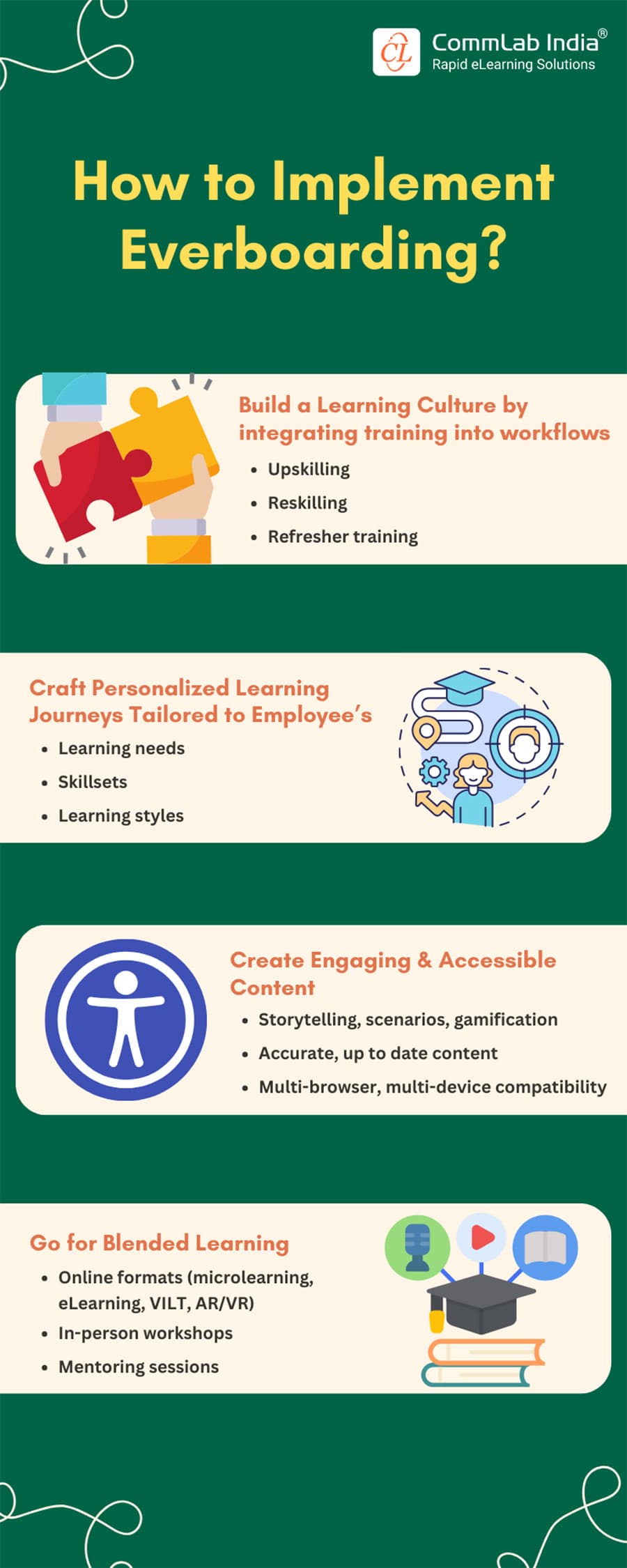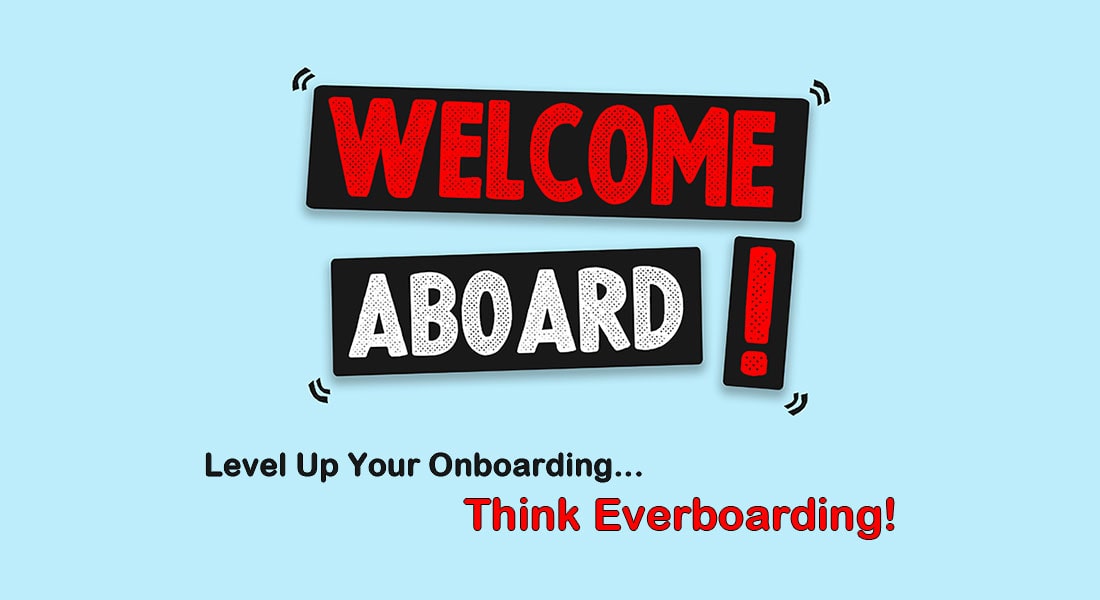Why is Everboarding Gaining Momentum in Modern Organizations? [Infographic]
![Why is Everboarding Gaining Momentum in Modern Organizations? [Infographic] Why is Everboarding Gaining Momentum in Modern Organizations? [Infographic]](https://blog.commlabindia.com/hubfs/blogs/everboarding-continous-learning-transformation-info.jpg)
Learning is not confined to the duration of a training session.
It's a continuous process that extends far beyond the completion of a formal training program. While training provides the foundation and initial knowledge, true learning begins when employees apply that knowledge in real-world situations, encounter challenges, seek out new information, and adapt to changing circumstances.
This is where everboarding steps in. It acknowledges that learning doesn't stop once the training is over, instead, it recognizes that employees need ongoing support, resources, and opportunities to reinforce their learning, address gaps, and stay updated with the latest developments in their field.
In this way, Everboarding transforms learning from a one-time thing into a lifelong pursuit of growth and excellence.
What is Everboarding? What's All the Buzz About?
Everboarding represents a more advanced iteration of traditional onboarding. While onboarding typically focuses on providing initial training to new hires, everboarding takes a broader approach. It views learning as an ongoing journey rather than a one-time event, adapting to the constantly changing business environment and training needs.
How Does Everboarding Shape Company Learning Culture?
Everboarding, as a modern solution to employee engagement and development, plays a crucial role in fostering and strengthening a company's learning culture. By integrating continuous learning opportunities into the employee journey beyond just the onboarding phase, everboarding ensures that employees are continuously supported in their growth and skill development.
As Harvard Business Review suggests, organizations with a strong learning culture are more likely to innovate and drive growth, as employees feel motivated and supported to develop new products, processes, and solutions. A robust learning culture encourages employees to actively seek out learning opportunities, collaborate with their peers, and continuously enhance their knowledge and skills.
→ Download Now: Aligning L&D with Business Leaders [eBook]
Beyond Onboarding —What’s the Everboarding Advantage?
- Everboarding ensures that learning doesn't stop after the initial onboarding. It facilitates ongoing learning and development opportunities for employees throughout their tenure.
- Everboarding adapts to the changing needs of employees and the organization. It provides timely training and resources to address new challenges, updates, or job roles.
- It demonstrates the organization's commitment to their growth and development, leading to higher job satisfaction and retention rates.
- With ongoing training and support, employees can continuously upskill and reskill, leading to enhanced job performance and productivity.
- Everboarding helps reinforce key concepts and skills learned during onboarding, preventing knowledge evaporation over time.
- It accommodates new hires, remote employees, and diverse learning preferences, ensuring consistent training experiences across the board.
How to Implement Everboarding?
Everboarding — The Next Evolution in Employee Development!
With Everboarding, employees are not just equipped with initial training, they're provided with ongoing support and resources to expand their knowledge and skills. By fostering a culture of continuous learning and development, Everboarding empowers employees to stay engaged, motivated, and successful in their roles. It's more than just onboarding, it's a commitment to nurturing talent and fostering growth at every stage of the employee journey.
By committing to a continuous training approach that covers the entire employee journey, organizations can cultivate a highly skilled and engaged workforce, leading to increased profitability and business achievements. If you're seeking further insights to enhance your training strategies, delve into our comprehensive eBook to explore how L&D efforts can align with business goals to navigate the future of work.






![What is Everboarding and How Is It Implemented? [Infographic]](https://blog.commlabindia.com/hubfs/blogs/what-is-everboarding-and-implementation-info.jpg)
